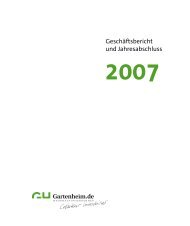analysis of the influences of solar radiation and façade glazing ...
analysis of the influences of solar radiation and façade glazing ...
analysis of the influences of solar radiation and façade glazing ...
You also want an ePaper? Increase the reach of your titles
YUMPU automatically turns print PDFs into web optimized ePapers that Google loves.
1.2 Background <strong>and</strong> literature review 35<br />
Strategies (costs <strong>and</strong> feasibility) <strong>of</strong> <strong>solar</strong> energy conversion based on open loop, flat-plate<br />
<strong>solar</strong> collector systems were studied by Badescu (Badescu, 2008). The optimization<br />
problem was solved by using a direct shooting approach - trajectory optimization by<br />
ma<strong>the</strong>matical programming (TOMP) developed by Kraft (Kraft, 1994). A registry-type,<br />
flat-plate <strong>solar</strong> collector <strong>and</strong> meteorological database for Bucharest were used in this study.<br />
Simulations were performed during a one-year operating period <strong>and</strong> good agreement was<br />
observed in calculations with <strong>the</strong> measurements available in literature. Estimates obtained<br />
for <strong>the</strong> considered system indicated that <strong>the</strong> maximum exergetic efficiency was usually less<br />
than 3 %.<br />
The next study <strong>of</strong> Badescu (Badescu, 2008) was also conducted to determine <strong>the</strong> optimal<br />
flow control in a closed loop flat plate <strong>solar</strong> collector, which cooperated with a water<br />
storage tank. The following design configurations were analyzed: a tank with one<br />
serpentine <strong>and</strong> a tank with two serpentines. In both cases, a fully mixed regime in <strong>the</strong><br />
storage tanks was considered. In <strong>the</strong> present project, <strong>the</strong> author implemented an indirect<br />
optimal control technique based on Pontryagin’s maximum principle. As it turned out, <strong>the</strong><br />
first considered system performed better than <strong>the</strong> second configuration. There is one<br />
limitation in <strong>the</strong> storage system with one serpentine. It should not operate during <strong>the</strong> winter<br />
period in regions with higher latitudes. Badescu (Badescu, 2008) stated that <strong>the</strong> optimal<br />
operation strategy consists <strong>of</strong> two jump steps up <strong>and</strong> two jump steps down between zero<br />
<strong>and</strong> <strong>the</strong> maximum rate <strong>of</strong> fluid flow in <strong>the</strong> primary circuit <strong>of</strong> <strong>the</strong> storage tank.<br />
Biaou <strong>and</strong> Bernier (Biaou, et al., 2008) carried out research in <strong>the</strong> various ways <strong>of</strong><br />
domestic hot water production for two climate conditions: Montreal <strong>and</strong> Los Angeles. The<br />
following renewable energy sources were examined:<br />
� conventional electric hot water tank,<br />
� ground-source heat pump (GSHP) desuperheater (refrigerant-to-water heat<br />
exchanger) combined with a regular electric hot water tank,<br />
� SDHW system composed <strong>of</strong> flat plate <strong>solar</strong> collectors, an external heat exchanger, a<br />
<strong>solar</strong> water storage tank <strong>and</strong> a regular auxiliary electric water tank, two circulators<br />
<strong>and</strong> a temperature controller (Fig. 1.13),<br />
� heat pump water heater (HPWH) indirectly coupled to a space conditioning<br />
ground-source heat pump.<br />
Four alternative systems were applied in zero-net energy homes (ZNEH), consisting <strong>of</strong> a<br />
well-insulated two-storey 156 m 2 residence with an unheated half-basement.





